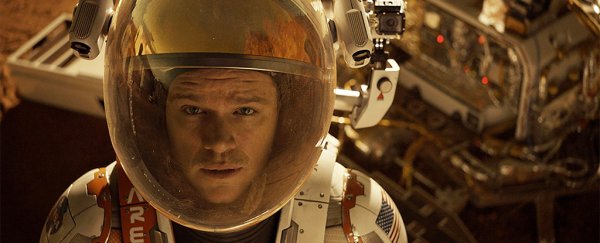Researchers have shown how astronaut urine, poop and even exhaled breath could be turned into 3D-printed plastics and nutrients, the kind of smart waste recycling we're going to need if humans are to make the long trip to Mars – and beyond.
The trick is in a yeast called Yarrowia lipolytica, which scientists have found can feed on the carbon from our breath and the nitrogen in our pee to produce everything from vitamin supplements to polyesters, perfect for the production of space tools.
Due to time and weight restrictions, we can't just take everything we're going to need on Mars up in a rocket, which is why the recycling system put together by a team from Clemson University could be vital for future missions to the Red Planet.
"If astronauts are going to make journeys that span several years, we'll need to find a way to reuse and recycle everything they bring with them," says one of the researchers, Mark A. Blenner. "Atom economy will become really important."
Right now, the carbon and nitrogen-eating yeast can only provide small amounts of polyesters and nutrients, but the team is working on increasing its output.
One of the developed yeast strains was engineered to produce omega-3 fatty acids, which help heart, eye, and brain health. The supplements we buy here on Earth have a shelf life of just a couple of years, so astronauts will need a way of making their own.
Another strain was developed to produce polyester polymers, the type of plastic you can find in clothes and which could eventually be repurposed to feed a 3D printer – the hope is that astronauts could repair and replace tools while out in space.
If that wasn't enough, the yeast investigations might help in fish farming and human nutrition on our own planet, through its ability to produce omega-3.
"We're learning that Y. lipolytica is quite a bit different than other yeast in their genetics and biochemical nature," says Blenner. "Every new organism has some amount of quirkiness that you have to focus on and understand better."
As well as boosting the output of the yeast, there are other challenges to overcome: right now the yeast needs an extra ingredient added by the scientists to properly convert carbon, while the polymers are proving tricky to harvest from the yeast (which hangs on to them tightly as a potential food source).
Even with the limitations of the system as it stands though, it shows a promising way of developing the sort of deep space waste recycling we'll need for long space journeys.
The experiments have been funded with a grant NASA awarded in 2015 to look into this kind of biological processing, and to build on the human waste recycling systems we already have on board the ISS – urine and sweat can already be converted back into drinking water, for example.
"Having a biological system that astronauts can awaken from a dormant state to start producing what they need, when they need it, is the motivation for our project," says Blenner.
The findings are being presented at the National Meeting & Exposition of the American Chemical Society.
The American Chemical Society also put together a video looking at the research, which you can view below:

